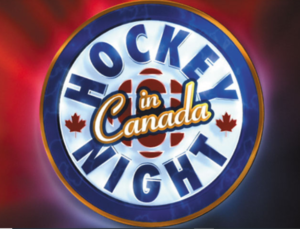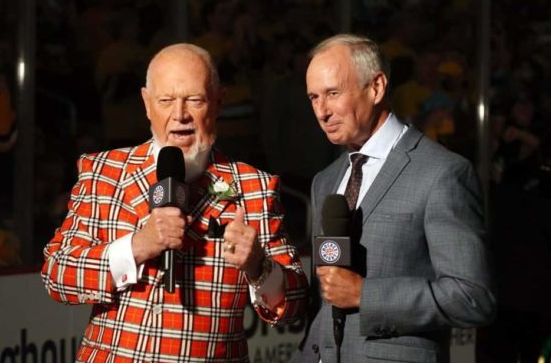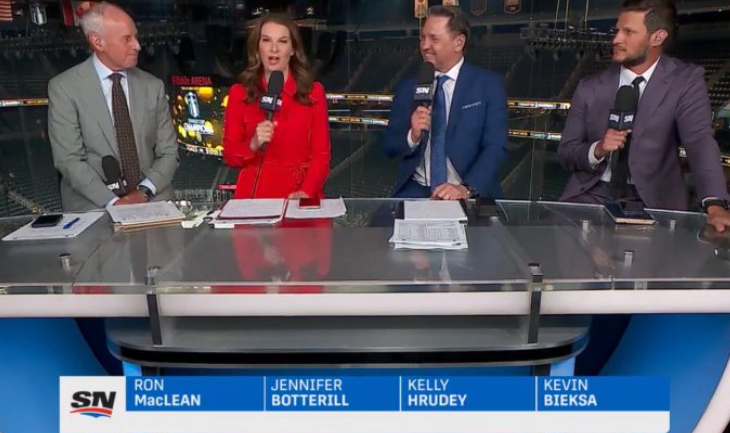Hockey Night In Canada, a long-standing Canadian television tradition, has played a crucial role in showcasing the passion and love Canadians have for ice hockey. This television program, which began in the early 1950s, has become an integral part of Canadian identity. Combining sports broadcasting with entertainment, Hockey Night In Canada has captivated millions of viewers throughout the years. Delving into the history of this iconic show reveals its evolution and the cultural significance it holds in Canadian society.

Hockey Night In Canada originated on radio in 1931 before transitioning to television in the 1950s. Its early beginnings on the radio paved the way for the program’s success, as it engaged listeners through its lively commentary and expert analysis. The shift to television brought an entirely new dimension to the show, allowing fans to witness the thrilling action of their favorite sport in real-time. From the beginning, Hockey Night In Canada aimed to bring the excitement of Canada’s national pastime into the living rooms of Canadians, making it a beloved program across the nation.
One cannot discuss Hockey Night In Canada without acknowledging the impressive personalities who have graced the broadcast over the years. Iconic figures like Foster Hewitt, Danny Gallivan, Dave Hodge, Ron Maclean, Don Cherry and Bob Cole have become household names, known for their distinctive voices and passionate commentary. These announcers captured the drama and intensity of the game, elevating the viewing experience for audiences. The play-by-play announcers, combined with knowledgeable commentators, offered unique insights into the sport, creating a sense of community and connection between viewers and the game.

Early Days:
- Hockey Night in Canada made its debut on November 9, 1931, on the Canadian Radio Broadcasting Commission (CRBC) radio network.
- Foster Hewitt, known for his famous phrase “He shoots, he scores!”, was the original play-by-play announcer for the Toronto Maple Leafs games.
- In 1936, HNIC moved to the Canadian Broadcasting Corporation (CBC) when the CRBC was absorbed into it.
1952: Television Debut:
- Hockey Night in Canada made its television debut on October 11, 1952. This marked a significant shift from radio to television broadcasting.
- Foster Hewitt continued as the lead play-by-play announcer, and his son Bill Hewitt joined him as a commentator.
1960s – Expansion and Innovation:
- In the 1960s, HNIC expanded its coverage to include more games and additional features.
- Danny Gallivan (1952 to 1984) and Bill Hewitt (1958–1981) provided the play by play commentary during the sixties.
- Keith Dancy (1952–1966) and Bob Goldham (1952–1966) provided the color commentary for most of the sixties.
Through the years, Hockey Night In Canada has witnessed substantial changes in its broadcasting format. One significant development was the introduction of color television in the late 1960s. This new technological innovation allowed viewers to witness the vividness and intensity of the game like never before. Additionally, advancements in camera technology provided close-up shots and different angles, leading to a more immersive and engaging viewing experience. As technology continued to evolve, so did the production quality and visual aesthetics of the show, resulting in a more polished and professional broadcast.
1970s – Multiple Hosts:
- Dave Hodge and Brian McFarlane were among the prominent hosts in the 1970s.
- The broadcast began experimenting with satellite hookups to show games from various locations, allowing fans across the country to watch their favorite teams.
1980s – Iconic Voices:
- Bob Cole and Harry Neale became iconic voices of HNIC during the 1980s.
- The show introduced “The Hot Stove Lounge,” a panel discussion about hockey topics.
- The show introduced “Coach’s Corner” in 1982, featuring Don Cherry and Ron MacLean.which became a beloved and controversial segment known for its outspoken commentary and colorful fashion.

Hockey Night In Canada isn’t solely about the game of hockey; it is also about the celebrations, traditions, and camaraderie that surround it. For instance, the legendary Coach’s Corner segment, hosted by Don Cherry, became immensely popular for its humorous and insightful analysis, while also promoting Canadian values and patriotism. The segment not only entertained but also fostered a sense of pride among Canadians for their beloved sport. Furthermore, the show’s intermission features, including interviews with players and coaches, provided an opportunity for fans to intimately connect with the athletes they admire
1990s – New Millennium:
- Ron MacLean took over as the main host in the early 1990s, continuing his partnership with Don Cherry.
- HNIC continued to innovate, with improved camera technology and more in-depth analysis.
2000s – Expansion and Digital Era:
- HNIC expanded its coverage to include more Canadian teams as the NHL grew.
- In 2006, the CBC signed a deal to continue broadcasting HNIC through 2014.
- The digital era brought changes, with the introduction of HNIC.ca and the HNIC GameCentre app for online streaming.
2014 – Rogers Communications Takes Over:
- In 2014, Rogers Communications acquired the exclusive rights to broadcast NHL games in Canada, taking over from the CBC. This marked a significant shift in the HNIC landscape.
- The show continued to feature Ron MacLean and Don Cherry (until Cherry’s departure in 2019).

Recent Years – Evolution and Adaptation:
- Under Rogers’ ownership, HNIC underwent significant changes, including new hosts and a rebranded studio show.
- Ron MacLean returned as the host, and the format of the show evolved to include multiple hosts, analysts, and reporters.
- The iconic theme music and overall presentation of HNIC remained largely unchanged, preserving its historical and cultural significance.
Conclusion:
Despite its massive success, Hockey Night In Canada faced challenges over the years. From broadcast rights disputes to competition from other sports programs, it had to adapt and find ways to maintain its place as the premier hockey broadcast in the country. The rise of digital media and streaming platforms also brought changes to the way fans consume sports content, posing new challenges for the show. However, Hockey Night In Canada successfully evolved by embracing these changes, launching their online platform, and providing fans with different ways to stay engaged and connected.
Hockey Night In Canada has undoubtedly become a cultural institution in Canada, and its deep-rooted history makes it an integral part of Canadian identity. It has transcended the boundaries of a sports broadcast, signifying the shared love for ice hockey that unites the nation. Whether tuning in from big cities or remote towns, Canadians come together on Saturday nights, eagerly watching the familiar opening montage and listening to the game’s familiar tune, signaling the beginning of another exciting night of hockey.
Hockey Night In Canada’s rich history reflects the profound impact it has had on Canadian culture and sports broadcasting. From its humble beginnings on radio to its evolution in the television era, the show has continuously adapted to captivate audiences and showcase the passion Canadians have for ice hockey. With its iconic announcers, evolving broadcasting formats, and engaging segments, Hockey Night In Canada has solidified itself as a cherished program, unifying millions of Canadians in their love for the sport. As the show continues to navigate the constantly evolving media landscape, its legacy and influence remain unmatched.
Thanks for your time. Please leave comments and suggestions below.




